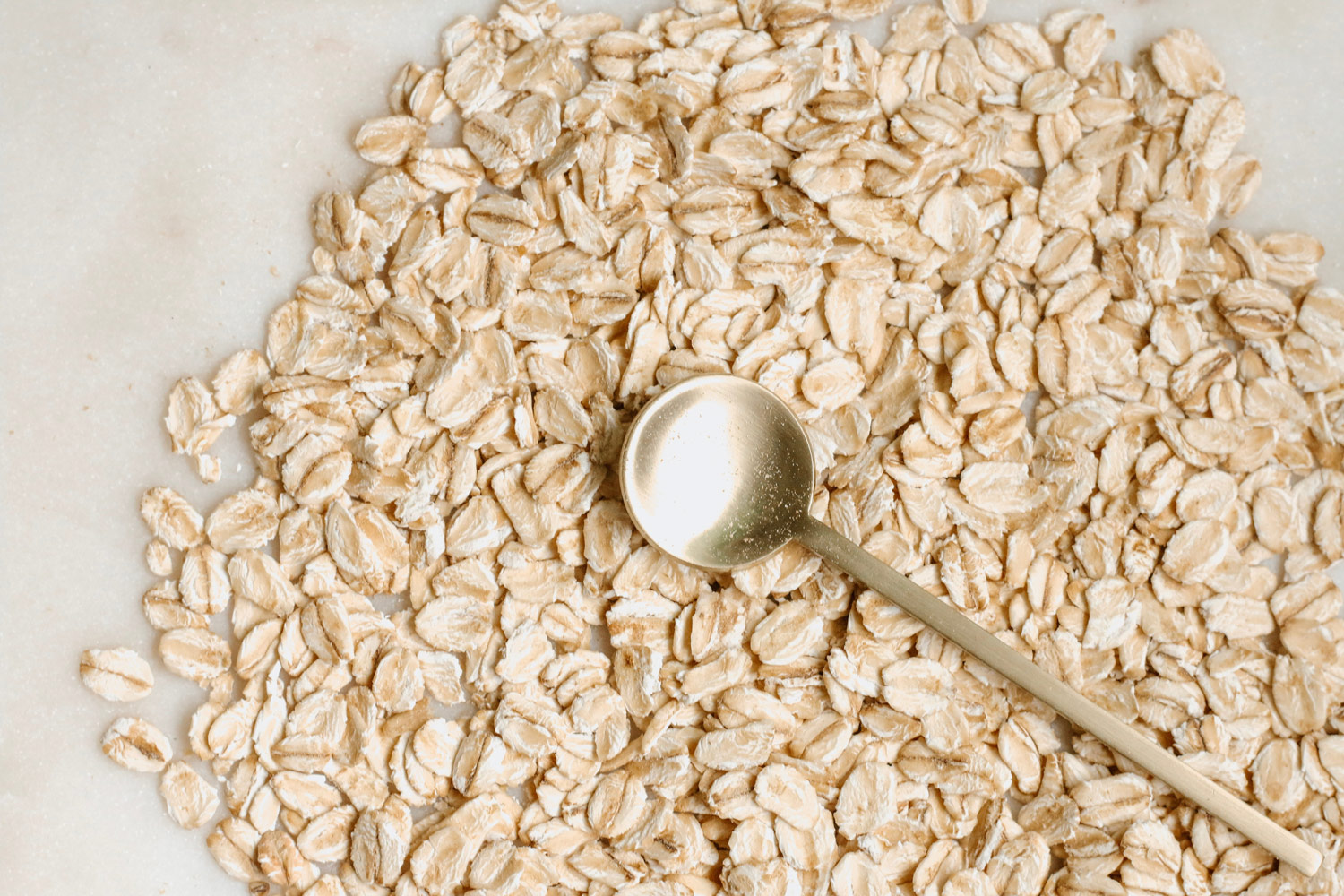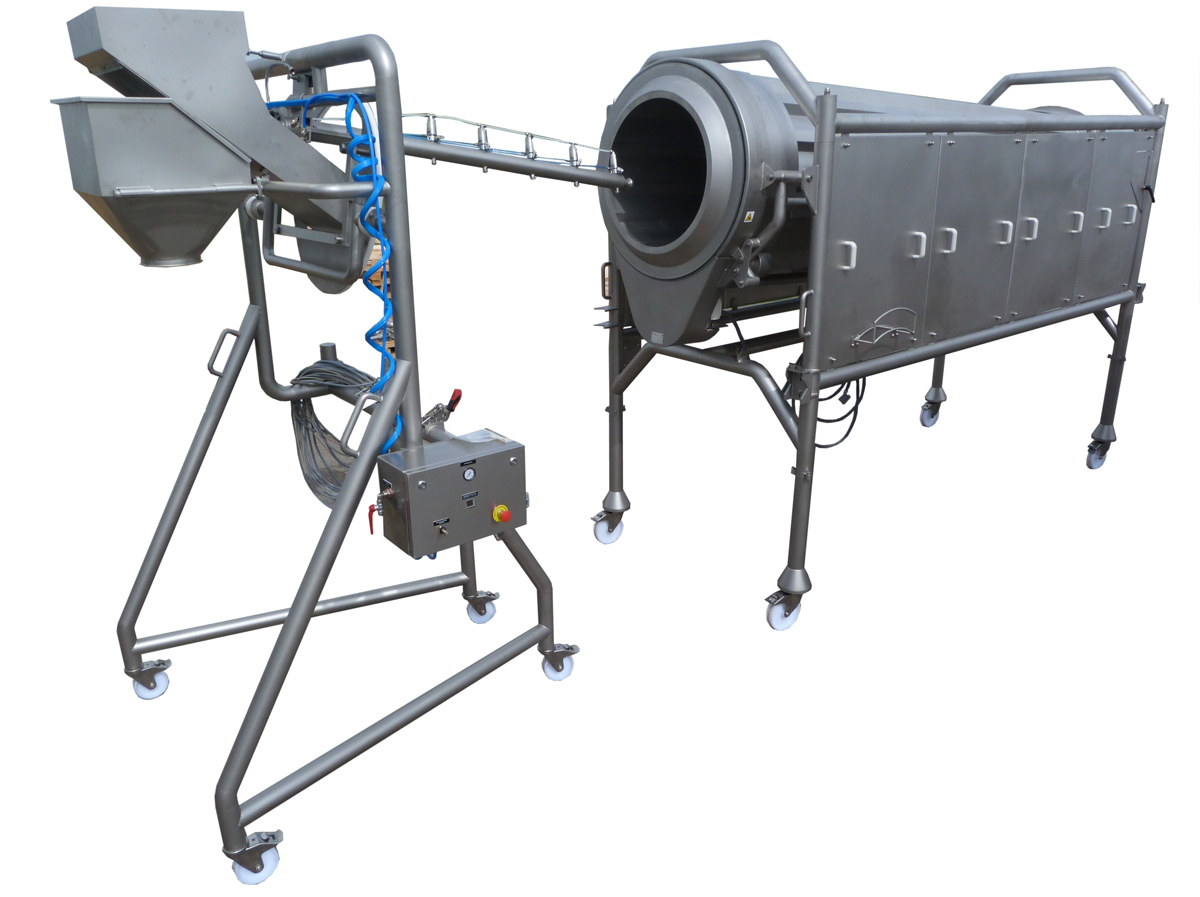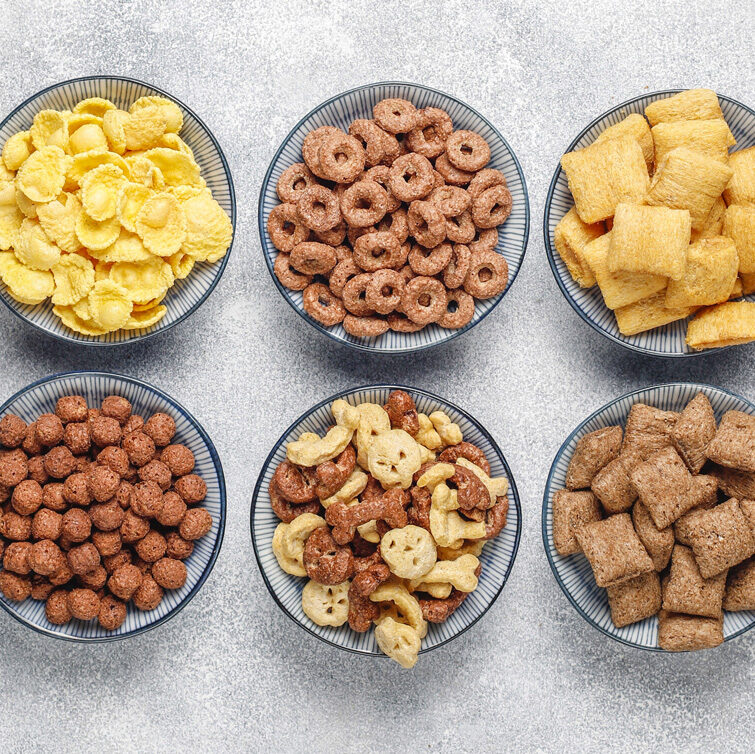

APPLICATION
Coating of Ready-To-Eat cereal with a sugar syrup
A breakfast cereal is a cereal-based ready-to-eat meal, primarily sweet, to eat with a cold or hot liquid. The coating enhances the appeal of the shape and the taste, while retaining the crispiness longer.


BASE
Core products
The core is made of a pre-cooked, flaked, or expanded cereal mix (corn, wheat, rice, oat, rye…). Expansion is direct (high-pressure short-time extrusion) or indirect (low-pressure extrusion, drying, increase in hot air). The resulting bulk density range is 0.05 – 0.3.
RECIPE
Ingredients
The liquid coating is prepared with the following:
- Water
- Sugar, beet or cane, molasses
- Other sweet sugar solutions: fruit juice, honey, caramel, malt
- Fats: oil, chocolate
- Solids: cocoa powder
- Flavours
The syrup is prepared in a mixing and cooking vat. Heat is required to dissolve the sugar and prevent crystallization. The higher the temperature, the lower the viscosity.
The typical solid content ranges from 50% to 75% to quickly spread on the cereal. A higher concentration reduces the drying time but requires advanced cooking, application, and tumbling systems.
Further ingredients can be applied separately:
- Groundnuts
- Vitamins (solutions)






RECIPE
Ingredients
The liquid coating is prepared with the following:
- Water
- Sugar, beet or cane, molasses
- Other sweet sugar solutions: fruit juice, honey, caramel, malt
- Fats: oil, chocolate
- Solids: cocoa powder
- Flavours
The syrup is prepared in a mixing and cooking vat. Heat is required to dissolve the sugar and prevent crystallization. The higher the temperature, the lower the viscosity.
The typical solid content ranges from 50% to 75% to quickly spread on the cereal. A higher concentration reduces the drying time but requires advanced cooking, application, and tumbling systems.
Further ingredients can be applied separately:
- Groundnuts
- Vitamins (solutions)
PROCESS
How does it work?
The cereals are introduced in the coating system; the syrup is dosed and dispersed on the grains by mechanical motion.
Optionally, particles – nuts and seeds – can be added as the syrup is still viscous. The product is not finished until it has been properly dried to avoid mould growth.
Given the volume, it is a continuous operation that involves large equipment.
Step 1.
Product Dosage.
Step 2.
Particles application 3-5 %
Step 3.
Liquid application 10 -30 %.
PROCESS
Coating system
The operation occurs in a rotary tumbler whose length and diameter are calculated to accommodate the product flow. Baffles inside enhance the tumbling action. The coating relies on the dispersion of the liquid ingredients first, then on the mechanical friction caused by tumbling. The liquid and powder ingredients can be added separately.
One option is to mix the finely ground powder into the syrup (cocoa, cinnamon) and carry out just one application. This ‘slurry’ needs to be constantly agitated until it is applied.
Dedicated spraying systems best disperse the liquid ingredients. The powder can be distributed with a vibratory tray. It is a continuous operation.
Rotation speed and tumbler tilt angle are adjusted to achieve the required friction and residence time. After coating, the product must be thoroughly dried in 2 or 3-tier driers for packaging.


PROCESS
Coating system
Syrup application drum.
PRODUCT EVALUATION
How do you measure your success?
Key quality features
A sweet taste is not the sole criterium.


Homogeneity
Many factors affect homogeneity. A minimal amount is necessary. Conversely, sugar reduction imposes lower percentages.
Aspect
The final aspect is achieved after drying, either mayte or shiny.
Product integrity
The cereal core must retain its original shape throughout handling, coating, and drying.
Key quality parameters
The long and complex process uses multiple parameters.


Temperature
Both cereal and syrup temperatures are essential. The higher, the better to reduce the viscosity and ease the dispersion.
Design and operation
System length, diameter, and agitation design spray manifold length and nozzle number. System rotation speed.
Drying
Although not a coating factor, it affects the final aspect depending on the temperature/time relation.
APPLICATION
Discover more applications

